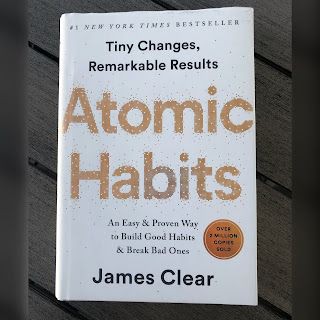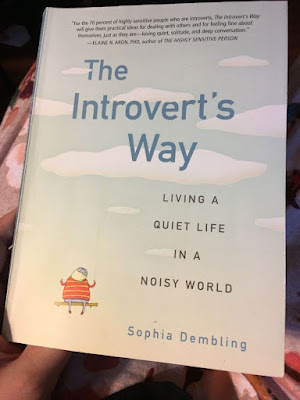Atomic habits by james clear - book Summary - ReadersHub
Atomic habits by James clear book summary
Atomic Habits by James Clear Summary
James Clear has been probing habits and decision- making for numerous times. He made his name as the author of one of the swift- growing dispatch newsletters in history. This newsletter grew from zero to subscribers in just two times. moment, his newsletter has over one million subscribers, and the papers on his website admit ten million successes each time. His work constantly appears in publications including The New York Times, Forbes and Business Insider. His first book, Atomic Habits, has vended millions of clones and has been restated into further than 50 languages. He’s a speaker about habits and nonstop enhancement at major companies similar as Cisco, Honda, Intel and LinkedIn. He’s a former athlete and a contributor to Against Malaria Foundation.
Introduction
In Atomic Habits, James Clear argues that big pretensions should n’t be your main focus in life. rather, you should be exercising frequent, repetitious conduct and systems to help develop habits that stick.
The significant changes you want to make in your life depend more on creating small habits than sizable shifts. For illustration, suppose you want to get in shape. In that case, your stylish bet is eating slightly better, exercising regularly, and getting enough sleep. rather of wasting your time setting unachievable pretensions with drastic changes, all you have to do is make one minor change daily. This theme runs throughout Atomic Habits. The quality of your life depends on the quality of your habits. Some habits are small like an snippet. As these infinitesimal habits accumulate, they can make a significant impact in your life.
The Fundamentals – Why Tiny Changes Make a Big Difference
What Are Habits?
Habits are small, everyday actions that we perform automatically, with little or no study. Habits are also important. We're what we do every day. In this way, habits form our identity. So, when repeated daily, indeed the lowest conduct have a considerable effect.
That said, positive change requires tolerance. But you can be confident that good habits keep you on the right line, indeed if you do n’t see results right down. Making significant changes in your life through habits does n’t bear significant bouleversement. bitsy changes to your geste
are frequently enough to lead to the asked results.
Why Is It Hard to Build Good Habits?
Conditioning
Habits are erected through exertion. In effect, we tend to repeat satisfying actions until they come automatic. For illustration, when you were a baby, you would have smelled your thumb to calm yourself. This comforting feeling was the satisfying consequence that encouraged you to repeat the geste
. This is why bad habits can be so hard to break and replace with good habits.
Fortunately, you can also use exertion to help make good habits. As grown-ups, we can engage with habits like going on a morning run because we get an endorphin buzz and feel more productive.
Minor Improvements
We fail to produce good habits because humans tend to move themselves that massive success requires massive action. It's easy to underrate the value of making minor advancements, like going on a morning run each day. But the benefits will accumulate since the habit is repeated daily.
Clear shows us why incremental changes can have a big impact. He explains that 1 of particular enhancement each day means you ’ll be 37 times better by the same time coming time. Then’s the calculation1.01 to the power of 365 days is37.78( in other words, 37 times better). That’s how small, everyday advancements come infinitesimal habits that help you reach your pretensions.
The strike is that bad habits can serve this way too. Clear shows how getting 1 worse each day results in terrible issues over the course of a time, as0.99 to the power of 365 is0.03( near 0).
Compound Interest
Infinitesimal habits are the emulsion interest of tone- enhancement. Just like plutocrat multiplies to produce emulsion interest, the effect of your habits multiplies as you repeat them. But this also means that habits may appear to make little or indeed no difference on any given day. Still, the impact they deliver over months or times can be enormous.
Our thing is to develop composite interest in healthy habits. But bad habits emulsion too. As mentioned before, putting off a design until hereafter may feel to make no difference at the time. But if you repeat this 1 error day after day, these bitsy crimes can compound into poisonous results.
Success is the product of diurnal habits, not formerly in a continuance metamorphoses. You won't identify immediate positive issues from diurnal habits, as issues will always lag behind habits. In fact, habits frequently appear to make no difference until you cross a threshold and unlock a new performance position.
This threshold is the table of idle eventuality. Because habits don't give us with the immediate delectation that humans crave, we frequently give up. This moment marks our table of idle eventuality. The table of idle eventuality shows us why it can be hard to make habits. You simply must persist long enough to break through this table. Habit delectation will take time, so you must learn to be patient and have faith.
Forget About Goals, Concentrate on Systems
Pretensions are the results you want to achieve. Systems are the processes that lead to those issues.
Your focus should be on thesystems.However, the thing will take care of itself, If you borrow this mindset. Clear provides a many reasons why systems manage pretensions
Winners and disasters have the same pretensions. For illustration, every Olympian wants to win a gold order, and every entrepreneur wants to be successful. simply creating this thing doesn't guarantee success. else, we'd have millions of gold losers, and every entrepreneur would achieve their dream. So, it’s the winners ’ systems that help them achieve success and get results.
Achieving a thing is only a evanescent change, so pretensions can actually circumscribe your happiness. We assume that reaching pretensions will bring immediate happiness. But this approach to life sets us up to fail. For illustration, we may still feel unfulfilled indeed after achieving our thing. And if we fail, we feel cheated out of a chance at happiness.
pretensions don't produce long- term progress, but systems do.
still, the problem is n’t you, If you have trouble changing your habits. The problem is your system. So, aim to concentrate on the overall system rather than your individual pretensions. A core theme of Atomic Habits is that you don't rise to the position of your pretensions. rather, you fall back on the position of your system. It’s all about the system, not pretensions.
Habit Loops
Habits are tone- buttressing. This means that doing the habit and entering the price strengthens your desire to do it again. You can use this to your advantage when you want to change your geste
. There's a clear step- by- step process that conduct travel through to come a habit :
- The cue triggers your brain to initiate a behavior because it predicts a reward.
- After receiving this initial reward, you will start to develop cravings. You are not craving the habit itself but the internal change it delivered.
- Based on these cravings, this behavior becomes part of your identity and becomes a habit you perform in your life.
- Finally, this habitual behavior starts to deliver long-term rewards.
1st Law – Make It Obvious
To take advantage of habit circles to make good habits, you want to make the cues egregious. For bad habits, you want to make the cues unnoticeable or remove them.
Suppose you want to get better at playing the guitar. In this case, you need an egregious cue that acts as a memorial to play the guitar. For illustration, you could put the guitar in the middle of the living room so that your brain is touched off more frequently.
Another excellent way to introduce new cues is by creating a habit mound. Habit mounding is simply the act of adding habits before and after each other. Flash back that your brain creates strong neurological connections to support regular habits. You can use those connections by tying a new habit to an established one. This could mean putting on drill clothes directly after taking off your work shoes, or planning for a nanosecond right after pouring your first mug of coffee.
How to Form Good Habits
Certain Stimulants can spark habitual geste. Once you understand that, you can use this knowledge to form good habits.
- Encourage better habits by changing your terrain. produce cues that are as egregious as possible, and you ’ll be more likely to respond to them. For illustration, suppose you want to eat healthier snacks. You could leave these healthy snacks out on the shelf rather than hiding them in the salad hole.
- Use Perpetration intentions. perpetration intentions are specific plans about the time and place you'll perform your new habit. Do n’t make vague statements like “ I'll eat better. ” rather, produce a clear plan of action, and set out when and where you'll carry out the habit you want to cultivate.
- Figure temptation. Humans are motivated by the expectation of price. Our brain releases dopamine( the sense-good hormone) not only when we do enjoyable effects but also when we anticipate them. Note that establishing seductive habits will help you stick to them. Link the habit you want to form( but aren't enjoying) with a geste
- that you ’re drawn to. For illustration, allow yourself to watch occurrences of your favorite show while you ’re cycling at the spa.
- Use the two- nanosecond rule. Make any new exertion feel manageable by only committing to two- twinkles of it. This is a way to make fluently attainable habits, leading you on to further extraordinary achievements. Getting started is the most critical step.
- Establish habits that are incontinently satisfying. When you ’re pursuing habits with a delayed return, try to attach immediate delectation to them.
How to Keep Your Habits on Track
Habit Tracker
Habit trackers help insure you maintain the diurnal actions needed to feed a habit. For illustration, use a timetable or journal to produce a habit shamus
. Cross off every day that you manage to stick to your good habit. What’s more, habit tracking itself is an seductive and satisfying habit. This is why habit shadowing is so effective.
Contract
Develop a habit contract that imposes negative consequences if you fail to stay on track. Try to involve other people. Simply knowing that someone is watching can be a important incitement to keep going.
2nd Law – Make It Attractive
Next, to make a habit stick, you must get regular positive feedback from this habit. An effective way to develop this positive feedback is to use temptation speeding . Temptation speeding relies on unenjoyable conditioning getting pleasurable through their connection with your favorite effects, similar as watching television and exercising. You're more likely to find a geste
seductive if you get to do one of your favorite effects contemporaneously.
The alternate system to make the pining more seductive is joining a culture where your asked geste
is regularized. For illustration, if you want to come well- read, you could join a book club. Joining this club will hold you responsible, and you'll probably find reading further fun than doing it alone.
Also, if you want to break bad habits, you'll want to join a culture that does n’t plump your bad habits. You also want to leave societies where your bad habits are regularized. Suppose you want to quit smoking. In that case, it might be judicious to stop spending time with people who are habitual smokers.
3rd Law – Make It Easy
Conventional wisdom holds that provocation is the key to changing ahabit.However, we will change, If we want to change poorly enough. Yet the relationship between provocation and changing habits is a bit more complicated than this. To be more specific, mortal geste
follows the law of the least trouble. We naturally gravitate toward the option that requires the least quantum of work. You can use this to your advantage by creating an terrain where doing the right thing is as easy as possible.
To produce this terrain, you should reduce the disunion associated with positive actions. For illustration, if you want to get fit, you could join a spa that’s on your route to work. You can also get your spa bag organized and ready the night ahead.
For unhealthy actions, you should increase thefriction.However, only turn it on when you insure you can say out loud the name of the program you want to watch, If you want to watch lower TV. This creates disunion and will stop careless viewing and switching channels just to see what’s on.
4th Law – Make It Satisfying
Habits do n’t frequently give the instant delectation of results. That’s why it can be hard for us to pick up new habits. We characterize the morning of a new habit as immolation without anyrewards.However, nothing will change physically at first, If you start going to the spa a many times a week. rather, it takes months to discover genuine results. So, to make your new habit stick, figure out a way to give yourself an immediate price.
One fashion you can use when the price is long- term is to set up a fidelity system for yourself. For illustration, imagine you want to give up alcohol. On its own, there's no satisfaction in simply abstaining. But suppose you transfer$ 25 to your vacation bank account every week you go without alcohol. In that case, you ’ll be incontinently satisfying yourself for your new habit.
The Three Layers of Behavior Change
In order to understand how to change our geste
, Clear introduces the three layers of geste
change issues, processes and identity. issues, the external subcaste, are the results of an action or group of conduct. Processes are what you do to achieve those results. Eventually, your identity, the inmost subcaste, is about what you believe. When people set out to ameliorate themselves, they first suppose about the outgrowth they want and also suppose about the process.
But it’s hard to change your habits if you do n’t change the underpinning beliefs( or identity) that led to your former actions. You might produce a habit as a result of increased provocation. In the end you wo n’t maintain this habit unless it becomes part of your identity.
Every action you take is a vote for the type of person you wish to come. No individual action will transfigure your beliefs overnight. The substantiation of your new identity grows as your positive conduct make up.
Here’s a simple two-step process for change:
- Be the type of person you want to be.
2. Prove your identity to yourself with little wins and small atomic habits.
Main concept and learning from atomic habits
- Breaking your bad habits and sticking to good ones.
- Avoiding the common mistakes most people make when changing habits.
- Overcoming a lack of motivation and willpower.
- Developing a stronger identity and believing in yourself.
- Making time for new habits.
- Designing your environment to make success easier.
- Making tiny, easy changes that deliver big results.
- Getting back on track when you get off course.
- Learning how to put these ideas into practice in real life.











Comments
Post a Comment